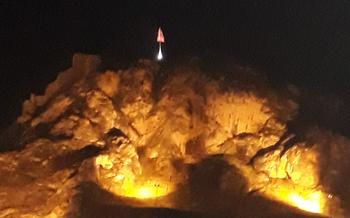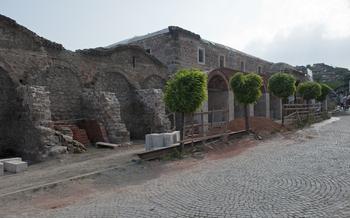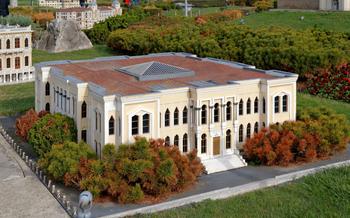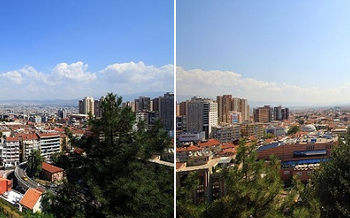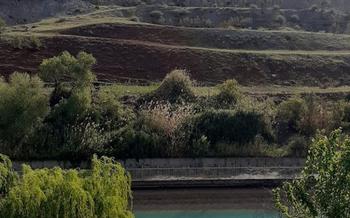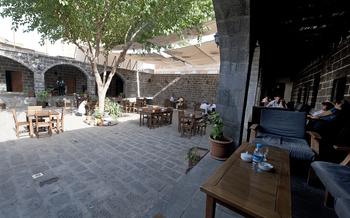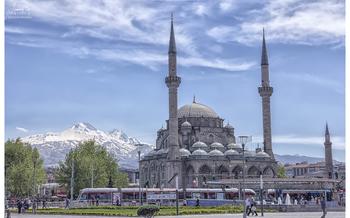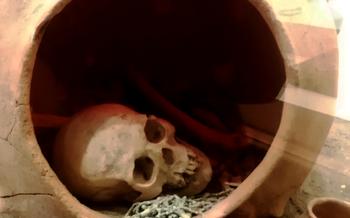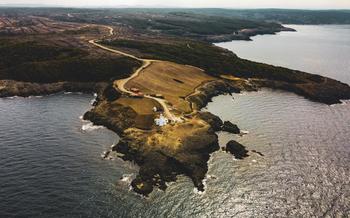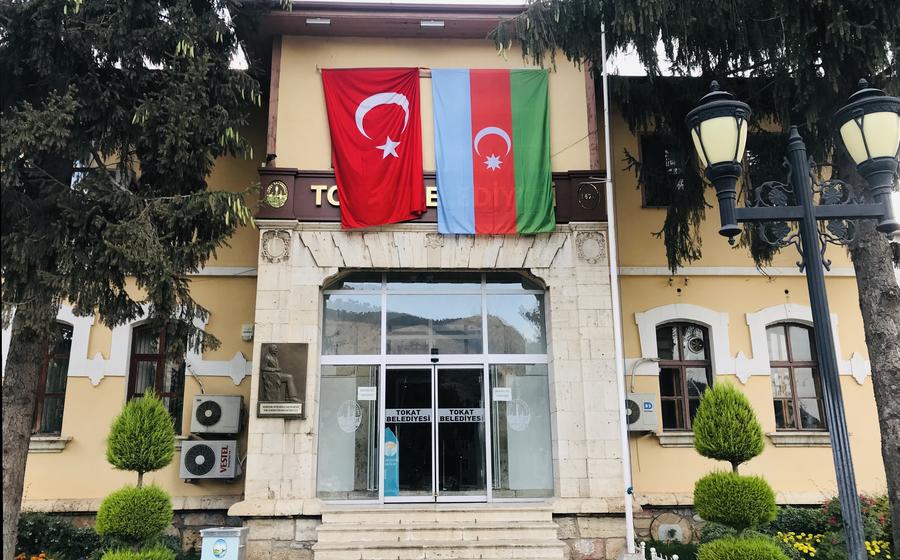
Yenihan
- Yenihan: A Historical Wonder
- Exploring the Yenihan's Unique Features
- Yenihan Museum: A Journey Through History
- Yenihan's Role in Tokat's Urban Fabric
- Yenihan as a Cultural Venue
- Restoration Efforts: Preserving the Past
- Yenihan in Local Folklore and Legends
- Yenihan's Contribution to Tourism
- Architectural Significance of the Yenihan
- Yenihan's Role in Trade and Commerce
- Yenihan as a Place of Community Gathering
- Yenihan's Enduring Legacy
- Yenihan's Impact on Local Craftsmanship
- Yenihan's Contribution to Urban Planning
Yenihan: A Historical Wonder
The Yenihan in Tokat, Turkey, stands as a testament to the city's rich history and architectural heritage. Built in the 17th century during the Ottoman Empire, this caravanserai served as a vital hub for trade and commerce along the Silk Road. The Yenihan's architectural significance lies in its unique blend of Ottoman and Seljuk design elements, showcasing the region's cultural diversity and artistic prowess. Its imposing gateway, intricate stone carvings, and spacious courtyard evoke a sense of grandeur and historical significance. Today, the Yenihan undergoes careful restoration efforts to preserve its architectural integrity and restore its former glory, ensuring its continued importance in Tokat's cultural landscape.
Exploring the Yenihan's Unique Features
The Yenihan's exterior captivates with its grandeur, featuring an impressive gateway that serves as a symbolic entrance to the complex. The gateway is adorned with intricate carvings and decorative elements, hinting at the architectural wonders that await within.
Stepping inside the Yenihan, visitors are greeted by a spacious courtyard, surrounded by arcaded galleries on all four sides. The courtyard provides a glimpse into the Yenihan's past, where merchants and travelers would gather, exchange goods, and seek shelter.
The rooms that line the galleries offer a glimpse into the diverse functions of the Yenihan. Some rooms were used for storage, while others served as living quarters for merchants and travelers. Each room is unique, showcasing different architectural details and decorative elements that reflect the craftsmanship of the era.
Among the notable features of the Yenihan are the iwans, which are vaulted halls that served as gathering places for merchants and travelers. These iwans are adorned with intricate tilework and calligraphy, adding to the Yenihan's rich visual appeal.
The Yenihan's courtyard is not just a functional space but also a place of beauty. The galleries are supported by slender columns, creating an elegant and airy atmosphere. The courtyard is often used for cultural events and performances, adding to the Yenihan's vibrant atmosphere.
Yenihan Museum: A Journey Through History
The Yenihan Museum, housed within the Yenihan building, is a treasure trove of artifacts and exhibits that narrate the captivating story of Tokat's rich past. As you step into the museum's hallowed halls, you'll embark on a journey through time, encountering relics that whisper tales of the city's glorious heritage.
The museum's collection encompasses an array of artifacts, each meticulously preserved to showcase the diverse aspects of Tokat's history. From ancient pottery and intricate textiles to gleaming metalwork and timeworn manuscripts, the exhibits provide a tangible connection to the city's past.
Among the highlights of the museum is a remarkable collection of coins, offering a glimpse into the economic and commercial activities that once thrived within the Yenihan's walls. These coins, minted in various eras, bear witness to Tokat's role as a vibrant trading center.
Equally captivating are the displays of traditional costumes and jewelry, showcasing the artistry and craftsmanship that have long been synonymous with Tokat. These exquisite garments and adornments speak to the city's rich cultural heritage and the enduring skills of its artisans.
The Yenihan Museum is not merely a repository of artifacts; it is a living testament to Tokat's enduring legacy. Through its carefully curated exhibits, the museum invites visitors to delve into the depths of history, gaining a profound appreciation for the city's cultural tapestry.
Yenihan's Role in Tokat's Urban Fabric
Tokat's urban fabric is intricately interwoven with the Yenihan, forming a tapestry of history and culture. The Yenihan's strategic location within the city, at the crossroads of major trade routes, played a pivotal role in its development. It served as a gateway for merchants, travelers, and pilgrims, contributing to Tokat's prosperity and cosmopolitan atmosphere. The Yenihan's presence attracted a diverse population, including artisans, traders, and scholars, who brought their skills, knowledge, and traditions, enriching the city's cultural landscape.
Over time, the Yenihan became a focal point for the surrounding neighborhood. Shops, markets, and workshops sprang up around it, creating a vibrant commercial hub. The Yenihan's courtyard served as a public square, hosting social gatherings, religious ceremonies, and community events. It was a place where people from all walks of life could meet, exchange ideas, and forge connections, fostering a sense of belonging and community spirit.
The Yenihan's architectural grandeur and historical significance have left an indelible mark on Tokat's urban identity. It stands as a testament to the city's rich past, attracting visitors from near and far who come to marvel at its beauty and learn about its intriguing stories. The Yenihan's presence has shaped Tokat's urban character, making it a unique and captivating destination for travelers seeking a glimpse into Turkey's cultural heritage.
Yenihan as a Cultural Venue
The Yenihan is not only a historical monument but also a vibrant cultural venue that hosts a variety of events and activities throughout the year. These events aim to promote local culture, arts, and traditions, while also providing a platform for talented artists and performers to showcase their work.
From art exhibitions and photography displays to live music concerts and traditional dance performances, the Yenihan offers a diverse range of cultural experiences for visitors and locals alike. Visitors can immerse themselves in the rich cultural heritage of Tokat by attending these events, which often feature local artisans, musicians, and performers.
The Yenihan's courtyard, with its unique atmosphere and historical backdrop, serves as an ideal setting for cultural events. It provides a stage for artists to share their creations and for audiences to engage with and appreciate the diverse talents of the region.
Attending events at the Yenihan is not only a delightful way to spend an evening but also a meaningful way to support local artists and contribute to the preservation and promotion of Tokat's cultural heritage. Visitors are encouraged to check the Yenihan's event calendar or inquire at the information desk for upcoming events and exhibitions.
Restoration Efforts: Preserving the Past
The Yenihan's historical significance and architectural beauty have made it a priority for preservation efforts. In recent years, extensive restoration work has been undertaken to restore the building to its former glory and ensure its continued preservation for future generations.
The restoration process involves meticulous attention to detail and the use of traditional techniques to maintain the Yenihan's authenticity. Skilled craftsmen and artisans collaborate to repair damaged elements, reinforce structural components, and revive the building's intricate decorative features.
Challenges during the restoration include sourcing original materials, addressing structural issues, and balancing the need for preservation with modern safety standards. However, the dedication of local authorities, cultural organizations, and international experts has ensured that the Yenihan's restoration proceeds with the utmost care and respect for its historical value.
The restoration efforts have not only focused on the physical structure of the Yenihan but also on preserving its cultural significance. Through careful research and documentation, historians and archaeologists have worked to uncover the building's past, shedding light on its role in Tokat's history and its importance as a cultural landmark.
The successful restoration of the Yenihan serves as a testament to the commitment to preserving Turkey's rich cultural heritage. It ensures that this architectural gem can continue to stand as a symbol of Tokat's past while providing a vibrant space for cultural events, exhibitions, and community gatherings.
Yenihan in Local Folklore and Legends
The Yenihan is deeply intertwined with the local folklore and legends of Tokat. One captivating tale tells of a hidden treasure buried beneath the Yenihan's foundations, guarded by a fierce dragon. According to legend, the dragon was once a handsome prince who was transformed into a monstrous beast by an evil wizard. The only way to break the curse and release the prince from his dragon form is to find a pure-hearted maiden who can withstand his fiery breath and gaze into his eyes without fear.
Another legend speaks of a secret tunnel that connects the Yenihan to the nearby Tokat Castle. It is said that the tunnel was built as an escape route for the castle's inhabitants in times of danger. Locals whisper that the tunnel is still accessible, hidden beneath the Yenihan's courtyard, waiting to be discovered by brave explorers.
These stories and legends add a touch of magic and mystery to the Yenihan, captivating the imaginations of locals and visitors alike. They serve as a reminder of the rich cultural heritage of Tokat and the enduring power of storytelling in shaping the collective memory of a place.
Yenihan's Contribution to Tourism
The Yenihan's historical significance and architectural beauty have made it a popular destination for tourists from around the world. The building's unique features and rich history have attracted visitors who are interested in exploring Turkey's cultural heritage. In addition, the Yenihan's location in the heart of Tokat makes it an ideal starting point for exploring the city's other attractions.
To cater to the needs of tourists, the Yenihan offers a range of tourism-related services and amenities. These include guided tours in multiple languages, information desks, and souvenir shops. The Yenihan also hosts regular cultural events and exhibitions, which provide visitors with an opportunity to experience Tokat's vibrant cultural scene.
The influx of tourists to the Yenihan has had a positive impact on the local economy. Tourism has created job opportunities for local residents and has helped to boost the city's revenue. In addition, tourism has played a role in promoting Tokat as a cultural and historical destination, which has attracted further investment and development.
To promote the Yenihan and Tokat as a tourist destination, the local government and tourism organizations have implemented various strategies. These include advertising campaigns, social media promotions, and participation in international tourism fairs. The Yenihan has also been featured in travel guides and magazines, which has helped to raise its profile among potential visitors.
Architectural Significance of the Yenihan
The Yenihan stands as a testament to the architectural prowess of the Ottoman era. Its unique design incorporates elements of traditional caravanserai architecture, blending functionality with aesthetics. The building's exterior boasts intricate stonework, arched entrances, and decorative facades, reflecting the artistic sensibilities of its time. Inside, visitors are greeted by a spacious courtyard surrounded by two-story galleries supported by elegant columns. The rooms and chambers feature vaulted ceilings, ornate niches, and colorful tilework, showcasing the craftsmanship and attention to detail that went into the Yenihan's construction. The Yenihan's architectural style showcases a harmonious fusion of Ottoman, Seljuk, and Byzantine influences, making it a valuable example of the diverse architectural heritage of Turkey. Its enduring beauty and historical significance have earned it recognition as a protected cultural asset, ensuring its preservation for generations to come.
Yenihan's Role in Trade and Commerce
Caravanserais, the historic precursors to modern-day hotels, played a pivotal role in trade and commerce during the Ottoman era. Serving as resting points for merchants and travelers along trade routes, they provided shelter, food, and security for both people and goods. The Yenihan, as a caravanserai, was an essential hub of activity in Tokat, a city strategically situated on the trade routes connecting the Black Sea region with the rest of Anatolia and beyond.
Within the Yenihan's walls, merchants from far and wide would gather to exchange goods, negotiate deals, and share information. The caravanserai's courtyard, with its spacious stables and storage facilities, accommodated caravans of camels and horses laden with precious merchandise. Merchants could rest assured that their goods were safe under the Yenihan's protection, as it was guarded by armed guards and patrolled regularly by the city's authorities.
The Yenihan's role as a center of trade had a profound impact on the development of Tokat as a commercial center. The city became renowned for its bustling markets, where a diverse array of goods from across the region and beyond were traded. The Yenihan's strategic location and reputation for safety and security attracted merchants from all corners of the Ottoman Empire, contributing to Tokat's prosperity and economic growth.
Yenihan as a Place of Community Gathering
The Yenihan's courtyard, with its spacious layout and inviting atmosphere, served as a vibrant social hub for the community. In traditional Turkish culture, communal spaces hold immense significance, fostering social cohesion and a sense of belonging. The Yenihan's courtyard provided a welcoming environment for locals to gather, exchange stories, and strengthen their bonds. Whether it was lively conversations over shared meals, festive celebrations, or simply enjoying each other's company, the Yenihan played a crucial role in nurturing the social fabric of Tokat throughout history.
Yenihan's Enduring Legacy
The Yenihan stands as a testament to the enduring legacy of Tokat's rich past. Its remarkable preservation and ongoing restoration efforts ensure that this architectural marvel continues to captivate visitors and locals alike. As a symbol of Tokat's cultural heritage, the Yenihan serves as a reminder of the city's significance throughout history. Its enduring presence contributes to the distinct identity of Tokat, weaving together the past, present, and future.
Preserving and celebrating the Yenihan's legacy is of paramount importance for Tokat and its people. This architectural gem embodies the city's resilience, creativity, and cultural depth. By safeguarding the Yenihan, future generations can continue to appreciate its historical significance, architectural beauty, and the stories it holds within its walls. The Yenihan's enduring legacy is a valuable asset that enriches the cultural landscape of Tokat and contributes to its vibrant identity.
Yenihan's Impact on Local Craftsmanship
The Yenihan played a pivotal role in promoting local craftsmanship and fostering a vibrant community of artisans and craftsmen in Tokat. The caravanserai provided a platform for skilled craftsmen to showcase their products and connect with merchants and customers. Over time, the Yenihan became renowned for its high-quality handicrafts, such as intricate carpets, hand-woven textiles, finely crafted jewelry, and distinctive pottery. The demand for these goods attracted artisans from neighboring regions, leading to a flourishing craftsmanship industry in Tokat.
The Yenihan's influence extended beyond its walls. It acted as a catalyst for the development of local industries and provided livelihoods for countless families. Many artisans established workshops and boutiques near the Yenihan, creating a vibrant hub of creativity and commerce. The Yenihan's presence attracted patrons from afar, further boosting the local economy and supporting the growth of traditional crafts.
Preserving and supporting traditional craftsmanship in Tokat is of utmost importance. The Yenihan serves as a reminder of the rich heritage and skills that have been passed down through generations. By promoting local crafts and supporting artisans, the Yenihan contributes to the preservation of Turkey's cultural identity and ensures that these traditions continue to thrive in the modern era.
Yenihan's Contribution to Urban Planning
The Yenihan's significance extends beyond its architectural and historical value. It played a crucial role in shaping Tokat's urban landscape and the development of urban infrastructure. The caravanserai's strategic location at the crossroads of important trade routes influenced the growth and layout of the city. It acted as a hub for travelers and merchants, leading to the establishment of markets, shops, and other businesses in its vicinity. The Yenihan's presence influenced the development of roads, bridges, and water systems, facilitating the movement of goods and people.
As Tokat grew and evolved, the Yenihan remained a central landmark, adapting to the changing needs of the city. It served as a model for urban planning and influenced the design of other buildings and public spaces. Its courtyard and surrounding structures provided a template for the development of urban plazas and commercial centers. The Yenihan's architectural features, such as its vaulted ceilings and intricate stonework, inspired local architects and builders, contributing to the unique character of Tokat's urban fabric.
Understanding the Yenihan's role in urban planning is essential for appreciating its enduring legacy. It serves as a testament to historical urban design principles and demonstrates how architectural landmarks can shape and influence the development of a city over time. Preserving the Yenihan is crucial for maintaining the integrity of Tokat's urban heritage and ensuring that future generations can appreciate its contributions to the city's unique identity.
